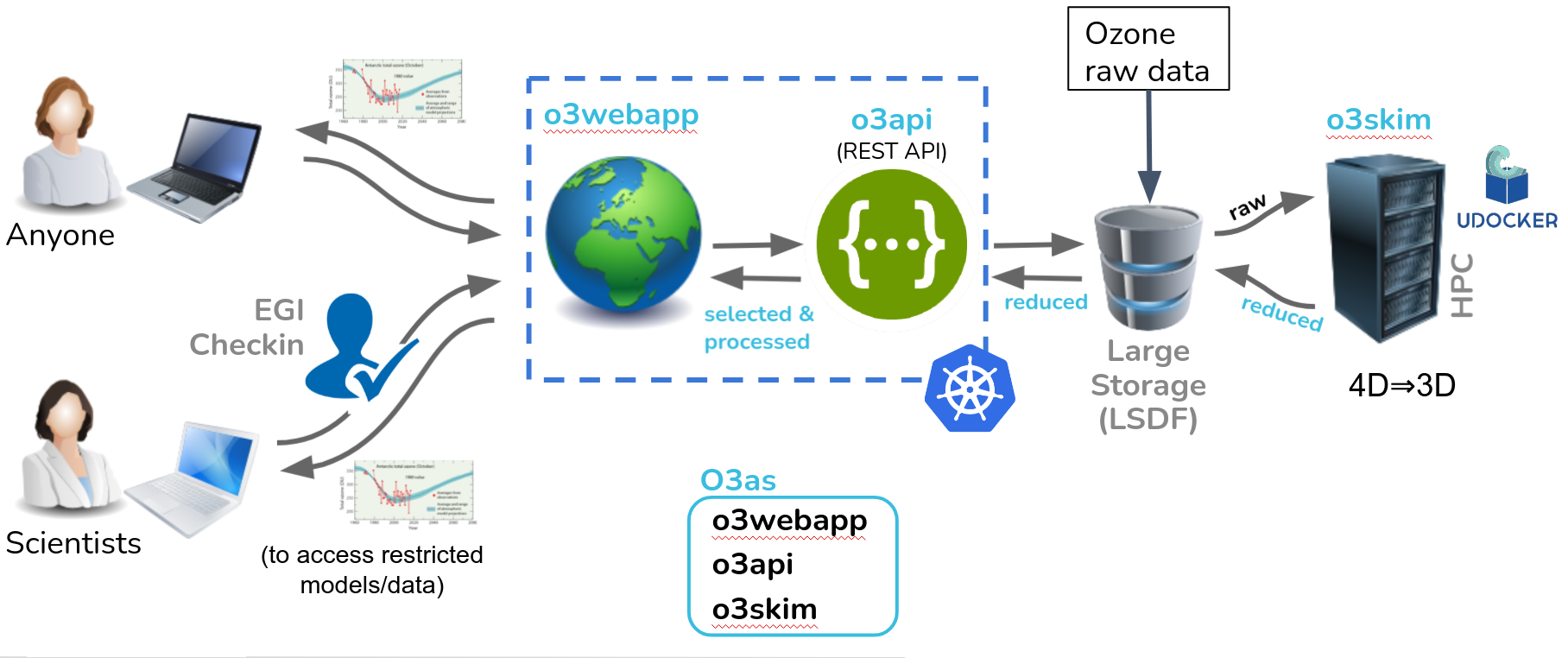O3as Project
Motivation
Monitoring and projecting stratospheric ozone is mandated by UN Environment to safeguard a healthy planet. Regularly many climate models project future climate and ozone change, producing huge amounts of data that have to be analysed for key metrics. Those key metrics help policy makers to judge if measures implemented to protect the stratospheric ozone layer are working.
Project goals
To provide a framework to efficiently explore ozone projections, including the calculation of key metrics:
Improve the existing workflow and provide a reliable tool for scientists to perform analysis in a more efficient manner
Ensure reproducibility of results
Simplify data access and the use
Publish high-level data to citizens
Problem to solve
A typical workflow of today has many manual steps
Full processing from raw data takes hours
The code is not always accessible or well maintained
O3as solution

O3as service general structure
Climate Models data (10’s TB) are collected in one place (Large Scale Data Facility, LSDF at KIT)
The data are reduced to the parameters of interest and homogenized at HPC by the means of o3skim component
The reduced data (100’s MB) can be accessed with the REST API in seconds (o3api component)
A user may do final processing and plotting by leveraging the WebApp (o3webapp to come)
All components are open source (GPLv3), documented, implemented with continuous integration and delivery (CI/CD) based on Jenkins (JePL), and dockerised: o3skim is run via udocker in HPC, o3api and o3webapp are in the cloud (Kubernetes cluster).